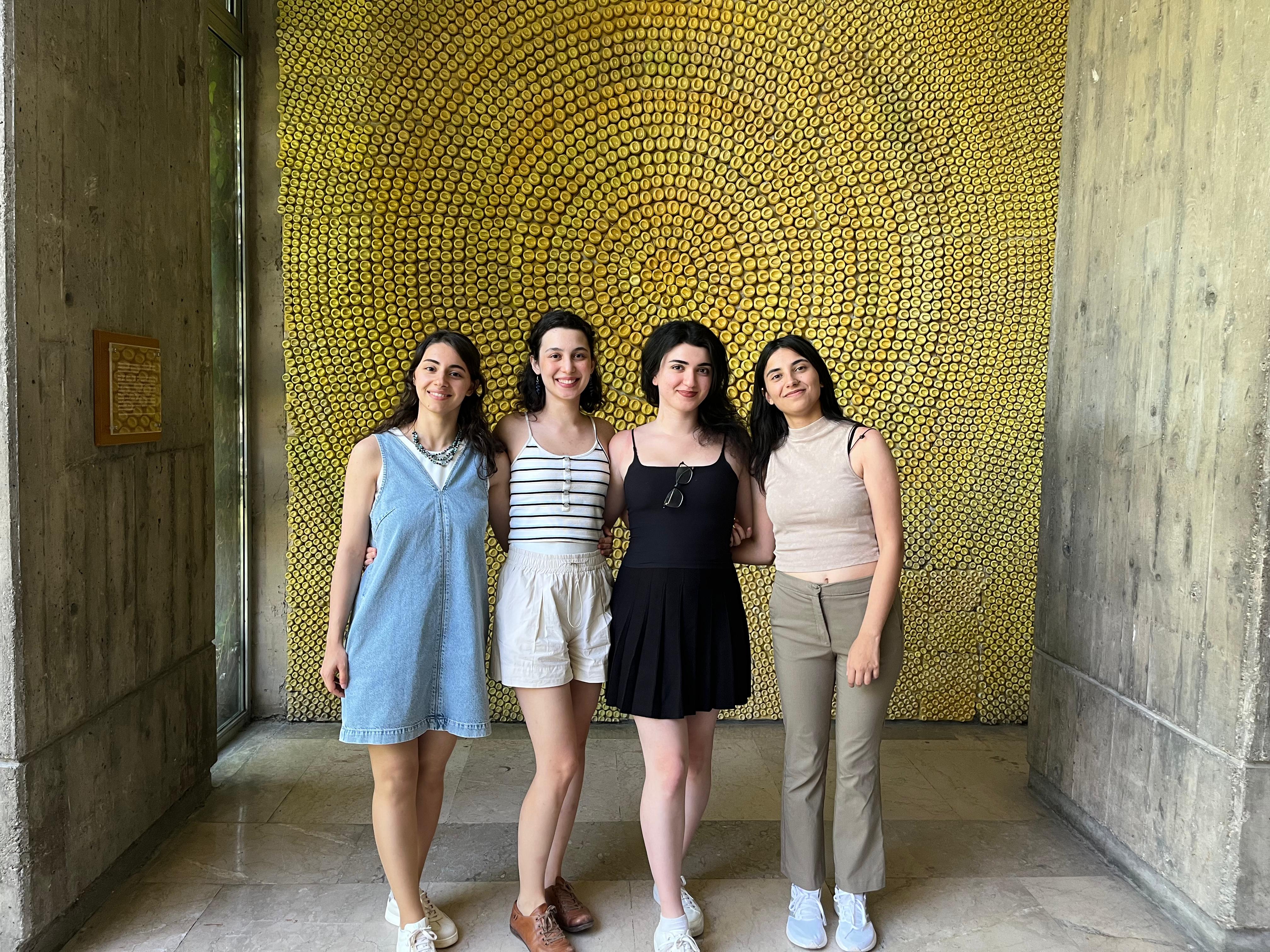What it does
Fear of movement limits the way visually impaired children explore and learn. BrailleSteps transforms Braille education into a safe and enjoyable space, focusing on kinetic learning to build confidence and make learning active and fun.
Your inspiration
We noticed that many blind children lack confidence when moving, especially in new spaces. At the same time, learning Braille is often slow, passive, and done at a desk. However, children learn better when they can move and play. Braillesteps turns Braille learning into an active experience. By feeling Braille through their feet while walking, children can build confidence and learn in a more natural, enjoyable way that fits their everyday lives. This playful method also supports independence and helps reduce the fear of mobility, making learning more inclusive and empowering.
How it works
Each of the 12 circular zones on the mat represents a Braille dot, arranged into 6 Braille cells. Beneath each circle are two force-sensitive resistors (FSRs). When the child steps on the correct dots with both feet at once, the sensors produce digital signals, which are processed in real-time by the low-energy ESP32 microcontroller. Upon detecting the correct combination, the mat’s speaker plays a single-note piano sound. After returning to the starting point, the mobile app provides auditory confirmation of the corresponding Braille letter. A Bluetooth module ensures continuous data exchange between the mat and the application. The mat has a three-layer structure with a textured, tear-resistant surface that enhances kinesthetic and tactile interaction. The system supports dual-foot validation and immediate feedback, encouraging active learning and sensory engagement.
Design process
Our design process began with research into challenges faced by visually impaired children in learning Braille, such as low engagement, limited movement, and lack of interactivity. We aimed to combine kinesthetic learning with physical activity and audio feedback. The first prototype, made from styrofoam, helped us explore the idea of step-based Braille learning. Although it lacked a central path and had limited tactile feedback, it was valuable in testing body alignment and verifying step dimensions for children. In the second prototype, we used fabric to widen the layout and added a walking path to improve mobility. We also tested foldability and replaced black-and-white with high-contrast colors, making it inclusive for sighted caregivers as well. In the final mock-up, we refined texture, battery placement, and size. Tests with visually impaired children showed success in tactile recognition and orientation. The digital Figma prototype confirmed that users could locate letters easily and appreciated the added movement, boosting engagement and learning.
How it is different
BrailleSteps is a multisensory Braille learning tool that integrates physical activity with real-time audio feedback and app-based monitoring. Unlike static Braille materials, it encourages children to interact through full-body movement, transforming literacy into an engaging, playful, and memorable experience. The mat recognizes tactile input and provides immediate voice feedback for each letter or command. Through the connected mobile app, users can switch between various learning modes such as letter recognition, word building, or numbers. Furthermore, the product allows instructors, parents, and therapists to actively monitor the learning process, adjust the content, and support the child’s individual progress. This ensures that BrailleSteps is not just a playful experience, but also a simple and effective way to support each child’s learning.
Future plans
After the prototype is finalized, the next step is testing with real users. These trials will provide insights into user experience, guiding improvements to the interface and content. Braillesteps is wireless, portable, and includes not only letters and words but also numbers, short sentences, and themed exercises. We plan to expand the content for various age and skill levels. Long term, we aim to make Braillesteps accessible in different languages and cultures, offering a sustainable, inclusive, and user-centered learning tool for visually impaired individuals.
Awards
Our project received funding from METU Undergraduate Research Fund to develop a working prototype and study Braille learning in visually impaired children with BrailleSteps. The design is officially registered by the university, protection processes started, and we are semifinalists in Teknofest.



Share this page on